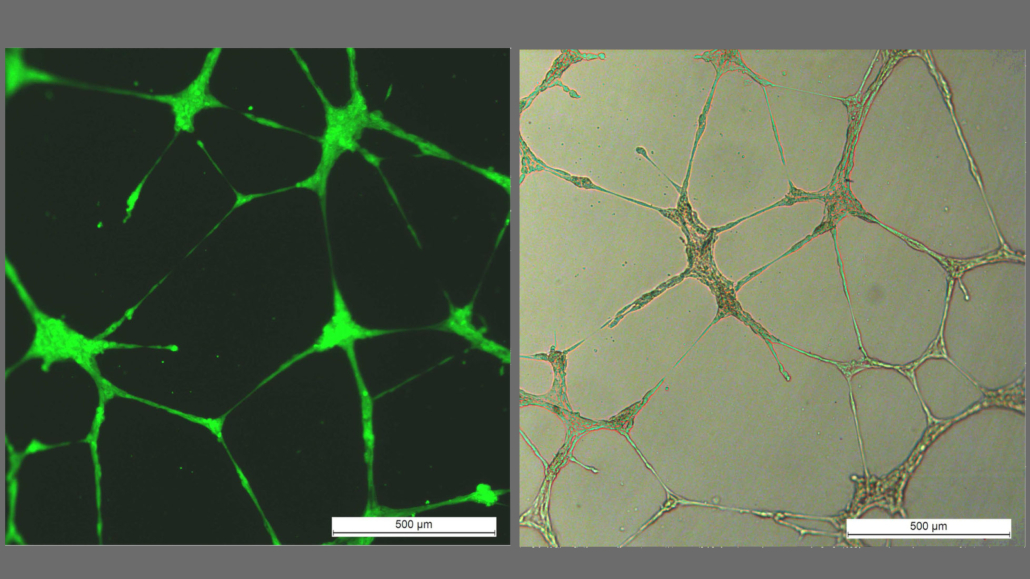
Angiogenesis, Cell Migration & Invasion Assays
Angiogenesis, the growth of new blood vessels from pre-existing vasculature, is a normal process in growth and development, as well as in wound healing and tissue granulation.
However, it is also involved in a number of pathological processes including formation of malignant tumors and metastasis, rheumatoid arthritis, and macular degeneration.
Cell motility is observed in unicellular organisms and is essential for the development and maintenance of multicellular organisms. Cells often migrate in response to specific external stimuli, including chemical and mechanical signals.
As cell migration/invasion plays an important role in various cellular processes such as angiogenesis, embryonic development, and the immune response, alterations in this process can lead to a number of pathologies including vascular disease, tumor formation and metastasis, atherosclerosis, arthritis and cognitive impairment.
PromoKine’s Angiogenesis Assay Kit provides simple, robust, easy to perform and semi-quantitative method to determine angiogenesis in vitro in less than 18 hours. It can be used for screening of angiogenesis inhibitors and stimulators or studies of angiogenesis related signal transduction. The assay is based on the measurement of the ability of endothelial cells to form three-dimensional structures (tube formation) under the influence of distinct stimulators, and uses a proprietary endotoxin-free and growth factor-reduced Extracellular Matrix Solution (BME).
The Cell Migration/Chemotaxis Assay Kits are easy to use, sensitive and high throughput-adaptable systems. The Cell Migration Assay Kits utilize a Boyden chamber, where the cells migrate through a semi-permeable membrane (available with three different pore sizes) in response to stimulatory or inhibitory compounds.
The Cell Invasion Assay Kits also utilize a Boyden chamber that is coated with a layer of BME (Basement Membrane Extract), laminin, fibronectin, Collagen I or Collagen IV. The cells first traverse the matrix in a combination of protein degradation and cellular locomotion and then migrate through the semi-permeable membrane in the Boyden chamber in response to different stimuli. Cell migration as well as cell invasion can be analyzed directly using a fluorescence plate reader.


 Adobe stock_DMH
Adobe stock_DMH